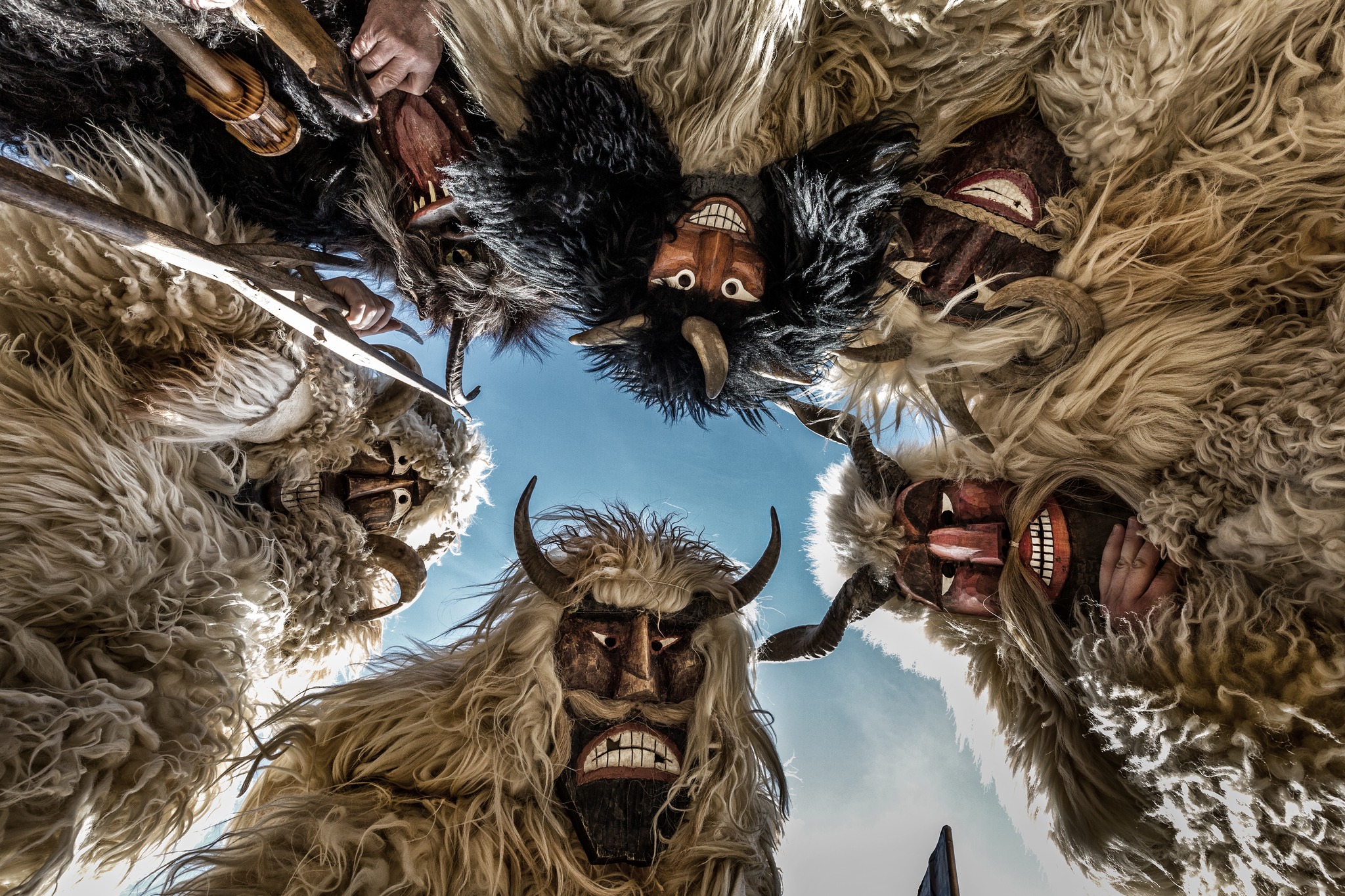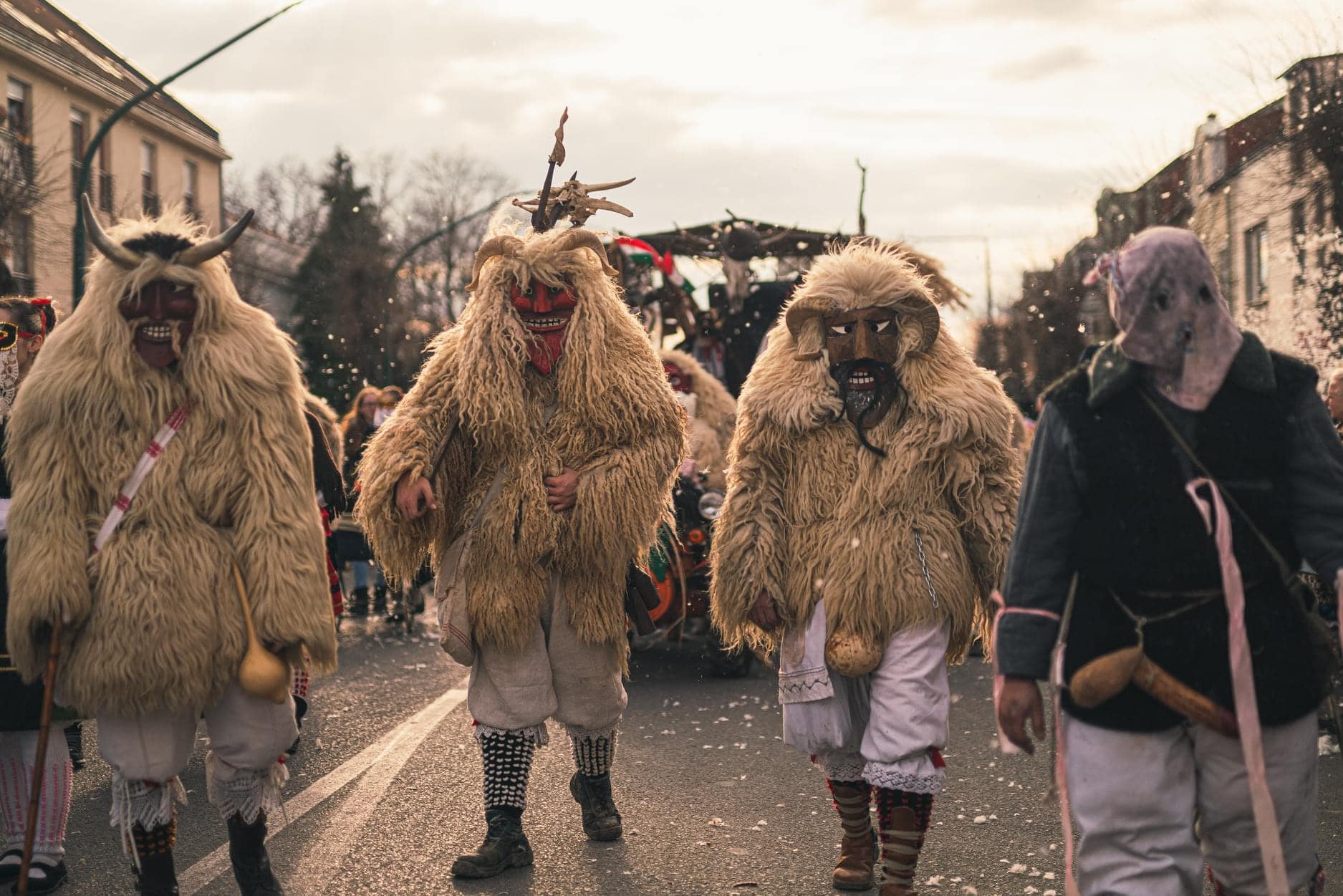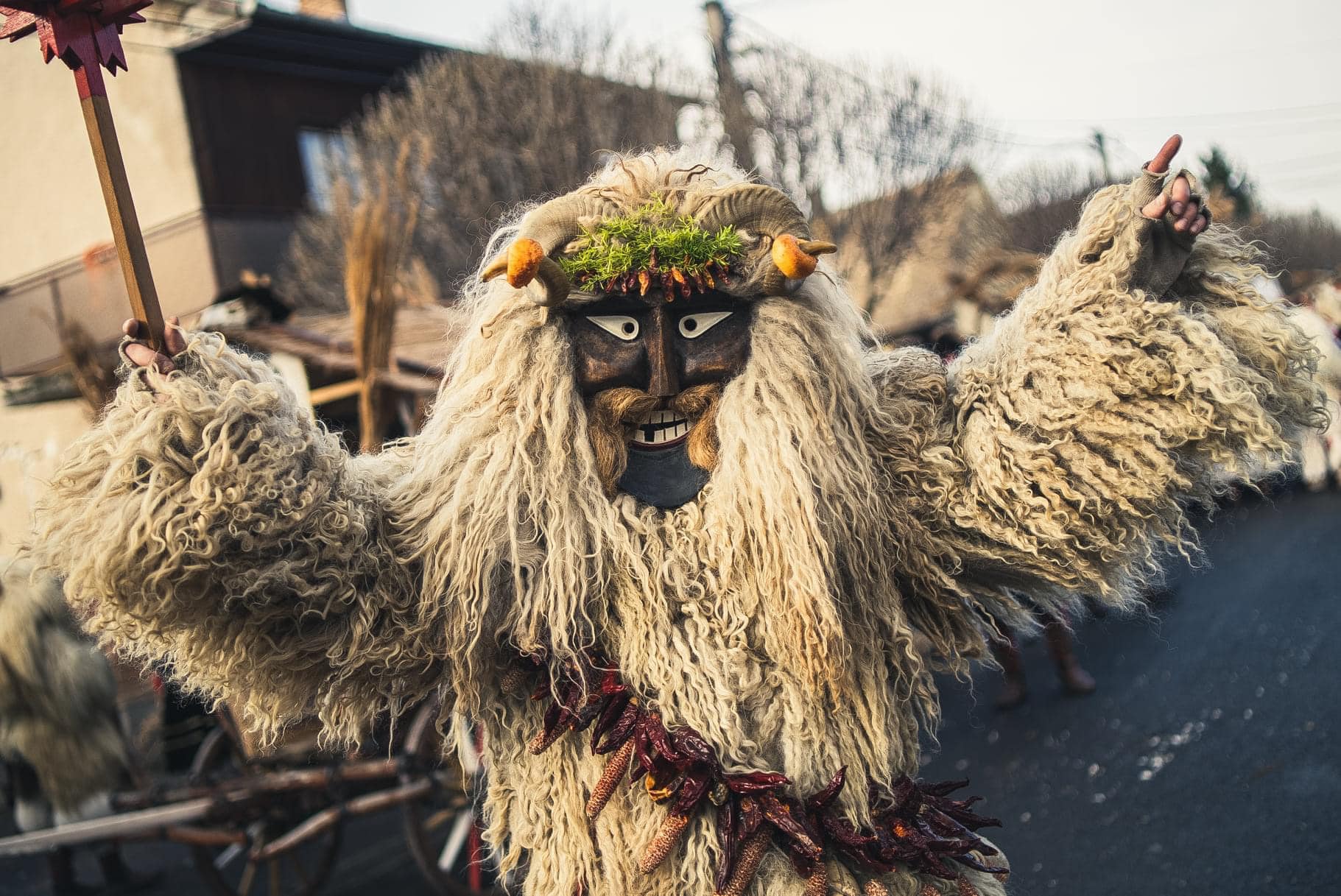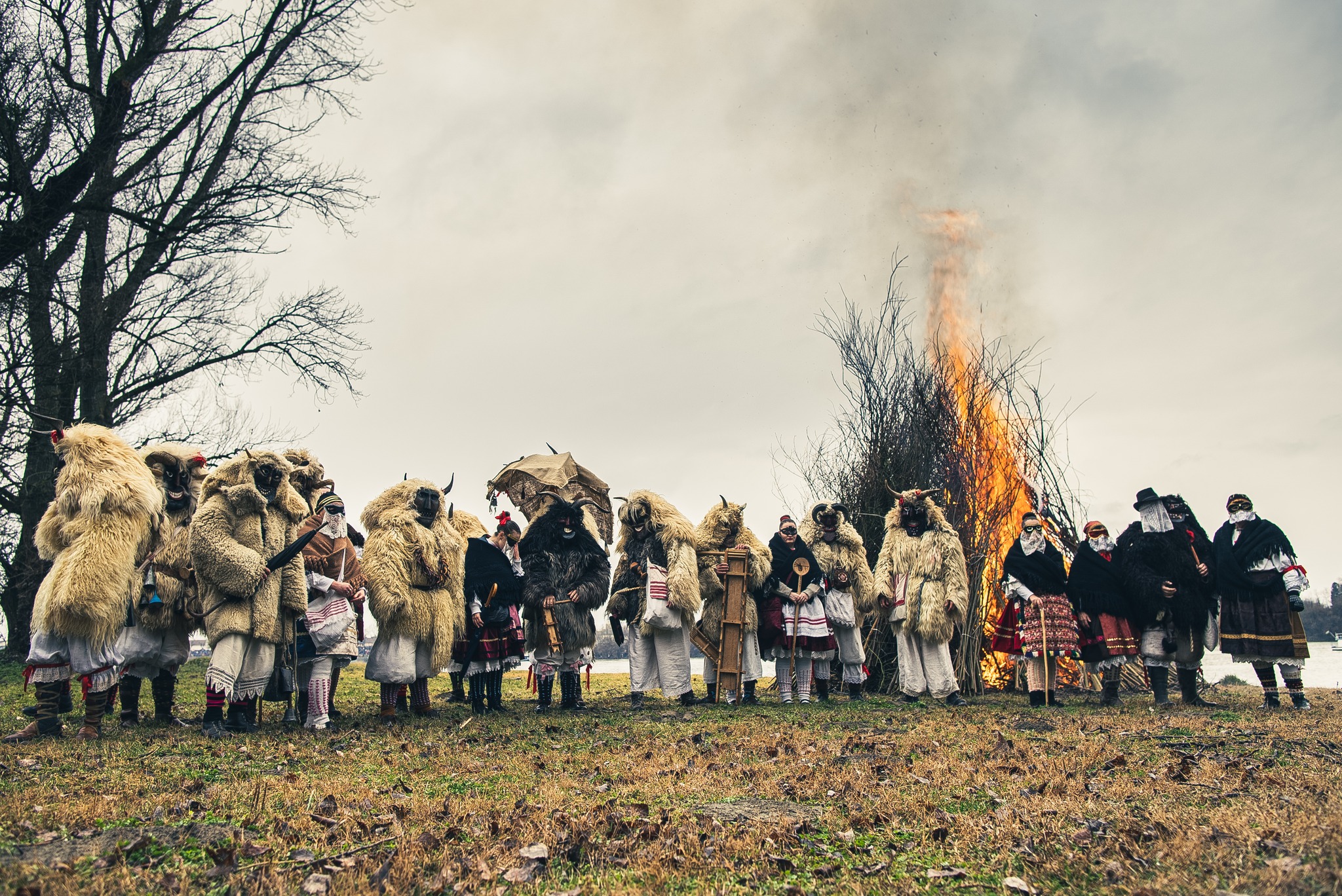
The six-day long Busó-walking (Busójárás) in Mohács kicks off today with a carnival parade, children’s folk dance groups, and performances by Busó groups. According to the organizers, a record 2,200 masqueraders and 70 Busó groups will take part in the country’s largest celebration bidding farewell to winter. The traditional folk festival lasts from February 16 to 21.
On Thursday, events will start at 10:00 am in Mohács, a town 200 kilometers south of Budapest along the Danube. Among other things, locals will inaugurate a new cultural space, the KultúrKikötő (Culture Harbor), where visitors will be able to attend ethnographic lectures and craft activities.
In the afternoon after the official opening, there will be a carnival parade and a demonstration of Busó-walking equipment. As tradition has it, the most spectacular events of the carnival will be held again this year on Carnival Sunday. On February 19, the Busó groups will cross the Danube in a boat, parade through the city center, launch the carnival coffin, inaugurate new Busós, and light a huge bonfire in the town square.

Photo: Facebook/Mohácsi Busójárás Hivatalos Oldala
Non-locals are expected to be the most numerous on Saturday and Sunday. From the early hours of the morning, they will be treated to a folk arts and crafts fair, a Busó-mask and folklore exhibition, craft activities, food tasting, tamburica band concerts, folk dance performances, and more than 2,000 masqueraders will be spotted around the city centers.
The organizers told MTI earlier that they expect more than 100,000 visitors during the six days of the event, and 40-45,000 on Saturday and Sunday.

Photo: Facebook/Mohácsi Busójárás Hivatalos Oldala
The event, which is famous far and wide, is expanding every year with more and more programs, and visitors are entertained mainly with folklore performances, such as folk dance groups, performances by Busó groups, dance halls, and children’s programs.

Photo: Facebook/Mohácsi Busójárás Hivatalos Oldala
The famous carnival, established by an ethnic group called Šokci, was first mentioned in a 1783 record. According to legend, the ethnic group from the Balkans, who settled in the area around Mohács during the Turkish occupation, fled to Mohács Island on the other side of the Danube to escape the Turkish occupation.
The Šokci later returned in disguise, crossing the river and ambushing the superstitious Turks, who fled the city in terror, terrified by the frightening masquerades. Busó-walking is a celebration bidding farewell to winter and welcoming spring, and its traditional elements have remained unchanged for centuries: adults dressed in fuzzy Busó furcoat, linen trousers, and Hungarian footwear called bocskor, wearing carved masks and equipped with distinctive accessories – tucker bags, mace, rattles, and bells.

Photo: Facebook/Mohácsi Busójárás Hivatalos Oldala
In 2009, the United Nations Educational, Scientific, and Cultural Organization (UNESCO), added the Busó-walking to its representative list of the Intangible Cultural Heritage of Humanity, the first in Hungary to do so.
Featured photo via Facebook/Mohácsi Busójárás Hivatalos Oldala